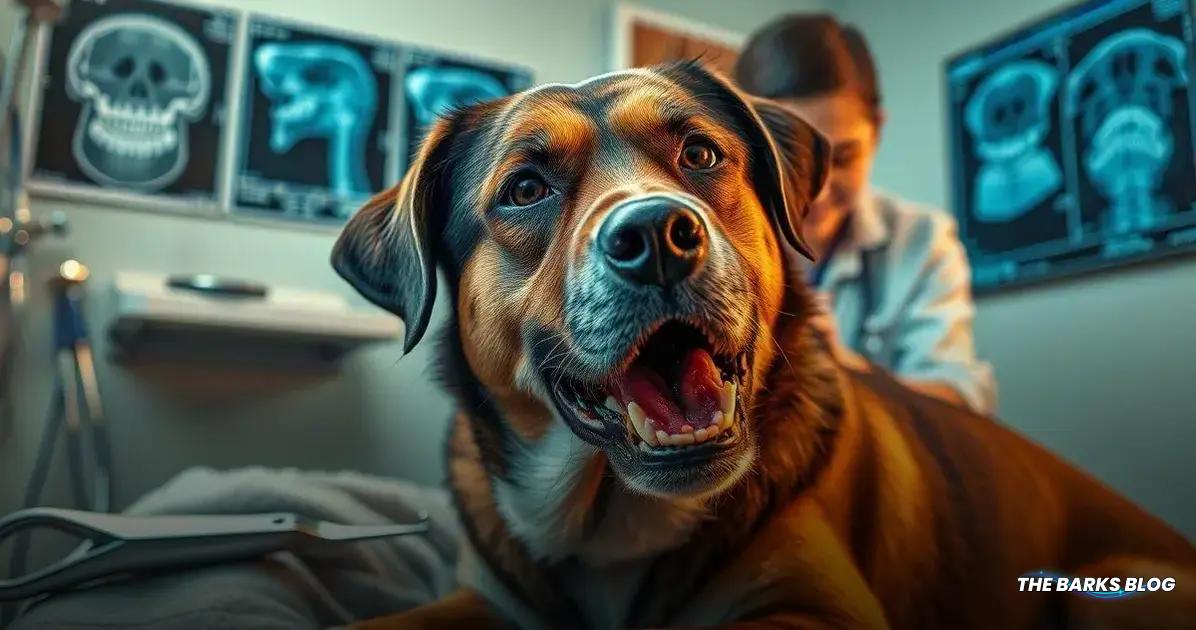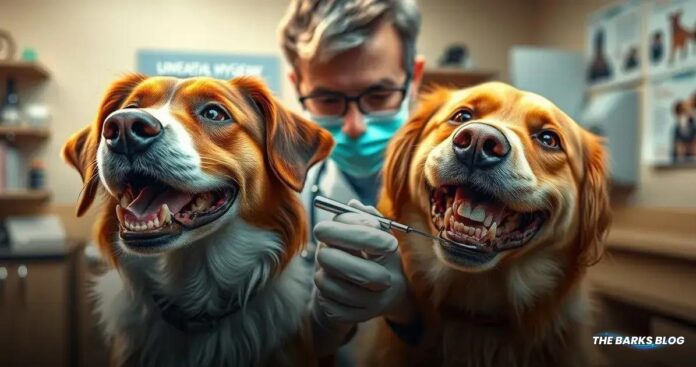Periodontal disease in dogs is a serious condition characterized by bacterial infection of the tissues surrounding the teeth, leading to inflammation and potential tooth loss. It progresses through four stages, beginning with gingivitis and can result in severe gum recession if not treated. Early signs include red or swollen gums, bad breath, and yellowed teeth. Preventive measures like regular brushing, dental treats, and veterinary checkups are essential for maintaining your dog’s oral health and preventing discomfort.
Periodontal disease in dogs is a serious condition that can lead to painful oral health issues. Many dogs show early signs by age three, making it crucial to understand how to prevent and manage this disease.

What Is Periodontal Disease in Dogs?
Periodontal disease in dogs, also known as gum disease, is a bacterial infection that affects the tissues surrounding your dog’s teeth. This condition can affect dogs of all breeds and sizes, but it is especially common in small dog breeds and those that are brachycephalic, meaning they have short snouts.
In its early stages, periodontal disease is treatable, but if left unchecked, it can lead to serious complications such as eroded gums and tooth loss. As the disease progresses, it can become increasingly painful for your dog, which is why incorporating preventive dental care into your dog’s routine is essential.
Understanding how periodontal disease develops is key to prevention. It begins with the accumulation of plaque on the teeth, which, if not removed, hardens into tartar. This buildup can irritate the gums, leading to inflammation and infection. Regular dental care, including brushing your dog’s teeth and providing dental treats, can help keep their mouth healthy and prevent periodontal disease from taking hold.

Stages of Periodontal Disease
Periodontal disease in dogs progresses through four distinct stages, each more severe than the last.
Stage 1: Gingivitis
The first sign of periodontal disease is gingivitis. At this stage, bacteria start to build up on the gums, forming plaque. If not removed, this plaque hardens into tartar within a few days. The infected gums become irritated and inflamed, leading to redness and swelling.
Stage 2: Early Periodontitis
If gingivitis is left untreated, your dog may enter the second stage, where the gums begin to recede from the teeth. This stage may be difficult to detect visually, but a veterinarian can identify it during a dental checkup. Slight jawbone loss may also begin at this stage.
Stage 3: Moderate Periodontitis
In the third stage, bone loss becomes more pronounced, and gum recession becomes noticeable. You might observe loose teeth as the connection between the gums and teeth weakens. If caught at this stage, your veterinarian may need to extract one or more teeth to prevent further complications.
Stage 4: Advanced Periodontitis
The final stage of periodontal disease is the most severe. More than half of the connection between teeth and gums is lost, leading to exposed tooth roots and potential tooth loss. At this point, your veterinarian may need to extract all teeth affected by the disease. Serious complications, such as jaw fractures or abscessed teeth, can occur, and bacteria may enter the bloodstream, affecting vital organs like the heart, liver, or kidneys.

Signs of Periodontal Disease
Recognizing the signs of periodontal disease in dogs is crucial for early intervention. Because the early stages can be subtle, you may not notice symptoms until the disease has progressed. Here are some common signs to watch for:
- Red or swollen gums: Inflammation is often the first visible sign of gum disease.
- Bad breath: Persistent foul odor from your dog’s mouth can indicate dental issues.
- Bloody chew toys or water bowl: Blood in your dog’s mouth may result from gum irritation or infection.
- Yellow or brown teeth: Discoloration is a sign of plaque and tartar buildup.
- Ropey saliva: Thick, stringy saliva can be a symptom of oral discomfort.
- Bumps in the mouth: Abnormal growths or lumps may indicate serious dental problems.
- Loose teeth: Teeth that feel loose may be a sign of severe gum disease.
- Excessive drooling: Increased saliva production can occur due to pain or discomfort.
Additionally, dogs suffering from periodontal disease may exhibit less obvious behaviors. If your furry friend is only chewing on one side of their mouth, shows a noticeable decrease in appetite, or struggles to keep food in their mouth while chewing, these could be signs of dental discomfort. If you notice any of these symptoms, it’s important to consult your veterinarian for a thorough dental examination.
Conclusion
Maintaining your dog’s dental health is essential to preventing periodontal disease, which can lead to serious health issues if left untreated.
By recognizing the signs and stages of this condition, you can take proactive steps to ensure your furry friend’s mouth remains healthy.
Regular dental care, including brushing, providing appropriate chew toys, and scheduling annual checkups with your veterinarian, can make a significant difference in your dog’s overall well-being.
With dedication and proper care, you can help your dog enjoy a happy, healthy life with a bright smile!
Frequently Asked Questions about Periodontal Disease in Dogs
What is periodontal disease in dogs?
Periodontal disease in dogs is a bacterial infection that affects the tissues surrounding the teeth, leading to gum inflammation and potential tooth loss.
What are the early signs of periodontal disease in dogs?
Early signs include red or swollen gums, bad breath, and yellow or brown teeth. Some dogs may also show discomfort while eating.
How can I prevent periodontal disease in my dog?
Preventive measures include regular tooth brushing, providing dental chews, and scheduling annual dental checkups with your veterinarian.
What happens if periodontal disease is left untreated?
If untreated, periodontal disease can lead to severe gum recession, tooth loss, and even systemic health issues as bacteria enter the bloodstream.
Can all dogs get periodontal disease?
Yes, all dogs can develop periodontal disease, but small dog breeds and brachycephalic breeds are particularly susceptible.
When should I take my dog to the vet for dental issues?
If you notice any signs of periodontal disease, such as bad breath, bleeding gums, or loose teeth, you should consult your veterinarian for an evaluation.




